| Weight | 1 lbs |
|---|---|
| Dimensions | 9 × 5 × 2 in |
| host | rabbit |
| isotype | IgG |
| clonality | polyclonal |
| concentration | 1 mg/mL |
| applications | ICC/IF, WB |
| reactivity | DAP Kinase 2 |
| available sizes | 100 µg |
rabbit anti-DAPK2 polyclonal antibody 5513
$445.00
Antibody summary
- Rabbit polyclonal to DAPK2
- Suitable for: ELISA,WB,IHC-P
- Isotype: IgG
- 100 µg
rabbit anti-DAPK2 polyclonal antibody 5513
| antibody |
|---|
| Tested applications WB,IHC,IHC,ELISA |
| Recommended dilutions Immunoblotting: use at 1ug/mL. Immunohistochemistry: use at 2ug/mL. These are recommended concentrations. Enduser should determine optimal concentrations for their applications. Positive control: Whole cell lysate from A431cells. |
| Immunogen Peptide corresponding to aa 356-370 of human DAPK2 (accession no. BAA88063). This sequence is identical to that of mouse. |
| Size and concentration 100µg and lot specific |
| Form liquid |
| Storage Instructions This antibody is stable for at least one (1) year at -20°C. Avoid multiple freeze-thaw cycles. |
| Storage buffer PBS, pH 7.4. |
| Purity peptide affinity purification |
| Clonality polyclonal |
| Isotype IgG |
| Compatible secondaries goat anti-rabbit IgG, H&L chain specific, peroxidase conjugated, conjugated polyclonal antibody 9512 goat anti-rabbit IgG, H&L chain specific, biotin conjugated polyclonal antibody 2079 goat anti-rabbit IgG, H&L chain specific, FITC conjugated polyclonal antibody 7863 goat anti-rabbit IgG, H&L chain specific, Cross Absorbed polyclonal antibody 2371 goat anti-rabbit IgG, H&L chain specific, biotin conjugated polyclonal antibody, crossabsorbed 1715 goat anti-rabbit IgG, H&L chain specific, FITC conjugated polyclonal antibody, crossabsorbed 1720 |
| Isotype control Rabbit polyclonal - Isotype Control |
| target relevance |
|---|
| Protein names Death-associated protein kinase 2 (DAP kinase 2) (EC 2.7.11.1) (DAP-kinase-related protein 1) (DRP-1) |
| Gene names DAPK2,DAPK2 |
| Protein family Protein kinase superfamily, CAMK Ser/Thr protein kinase family, DAP kinase subfamily |
| Mass 42898Da |
| Function FUNCTION: Calcium/calmodulin-dependent serine/threonine kinase involved in multiple cellular signaling pathways that trigger cell survival, apoptosis, and autophagy. Regulates both type I apoptotic and type II autophagic cell death signals, depending on the cellular setting. The former is caspase-dependent, while the latter is caspase-independent and is characterized by the accumulation of autophagic vesicles. Acts as a mediator of anoikis and a suppressor of beta-catenin-dependent anchorage-independent growth of malignant epithelial cells. May play a role in granulocytic maturation (PubMed:17347302). Regulates granulocytic motility by controlling cell spreading and polarization (PubMed:24163421). {ECO:0000269|PubMed:17347302, ECO:0000269|PubMed:24163421, ECO:0000269|PubMed:26047703}.; FUNCTION: Isoform 2 is not regulated by calmodulin. It can phosphorylate MYL9. It can induce membrane blebbing and autophagic cell death. |
| Catalytic activity CATALYTIC ACTIVITY: Reaction=L-seryl-[protein] + ATP = O-phospho-L-seryl-[protein] + ADP + H(+); Xref=Rhea:RHEA:17989, Rhea:RHEA-COMP:9863, Rhea:RHEA-COMP:11604, ChEBI:CHEBI:15378, ChEBI:CHEBI:29999, ChEBI:CHEBI:30616, ChEBI:CHEBI:83421, ChEBI:CHEBI:456216; EC=2.7.11.1; Evidence={ECO:0000269|PubMed:10376525, ECO:0000269|PubMed:26047703}; CATALYTIC ACTIVITY: Reaction=L-threonyl-[protein] + ATP = O-phospho-L-threonyl-[protein] + ADP + H(+); Xref=Rhea:RHEA:46608, Rhea:RHEA-COMP:11060, Rhea:RHEA-COMP:11605, ChEBI:CHEBI:15378, ChEBI:CHEBI:30013, ChEBI:CHEBI:30616, ChEBI:CHEBI:61977, ChEBI:CHEBI:456216; EC=2.7.11.1; Evidence={ECO:0000269|PubMed:10376525, ECO:0000269|PubMed:26047703}; |
| Subellular location SUBCELLULAR LOCATION: Cytoplasm. Cytoplasmic vesicle, autophagosome lumen. |
| Tissues TISSUE SPECIFICITY: Expressed in neutrophils and eosinophils (PubMed:24163421). Isoform 2 is expressed in embryonic stem cells (at protein level). Isoform 1 is ubiquitously expressed in all tissue types examined with high levels in heart, lung and skeletal muscle. {ECO:0000269|PubMed:10376525, ECO:0000269|PubMed:17347302, ECO:0000269|PubMed:21408167, ECO:0000269|PubMed:24163421}. |
| Structure SUBUNIT: Homodimer in its autoinhibited state. Active as monomer (By similarity). Isoform 2 but not isoform 1 can interact with ATF4. Interacts with 14-3-3 proteins YWHAB, YWHAE, YWHAG, YWHAH, YWHAQ, YWHAZ and SFN; the interaction requires DAPK2 phosphorylation at Thr-369 and suppresses DAPK2 kinase activity and DAPK2-induced apoptosis (PubMed:26047703). {ECO:0000250, ECO:0000269|PubMed:26047703}. |
| Post-translational modification PTM: Autophosphorylation at Ser-318 inhibits its catalytic activity. Dephosphorylated at Ser-318 in response to activated Fas and TNF-alpha receptors. {ECO:0000269|PubMed:11230133}. |
| Domain DOMAIN: The autoinhibitory domain sterically blocks the substrate peptide-binding site by making both hydrophobic and electrostatic contacts with the kinase core. {ECO:0000250}. |
| Target Relevance information above includes information from UniProt accession: Q9UIK4 |
| The UniProt Consortium |
Data
Publications
| pmid | title | authors | citation |
|---|---|---|---|
| We haven't added any publications to our database yet. | |||
Protocols
| relevant to this product |
|---|
| Western blot IHC ICC |
Documents
| # | SDS | Certificate | |
|---|---|---|---|
| Please enter your product and batch number here to retrieve product datasheet, SDS, and QC information. | |||
Only logged in customers who have purchased this product may leave a review.
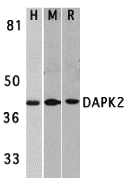

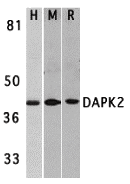


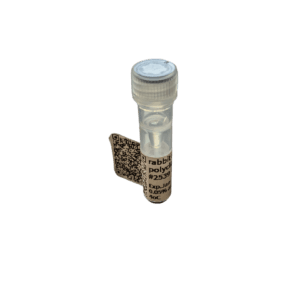



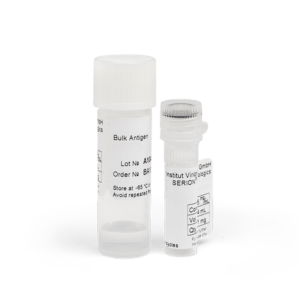
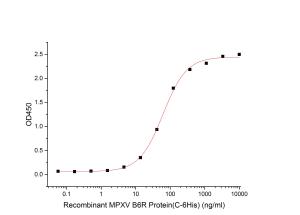
Reviews
There are no reviews yet.